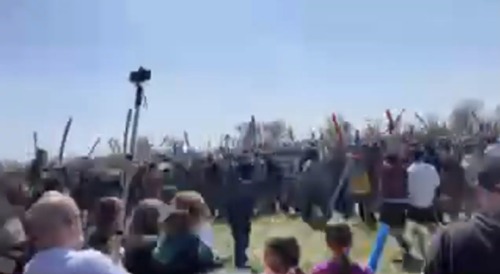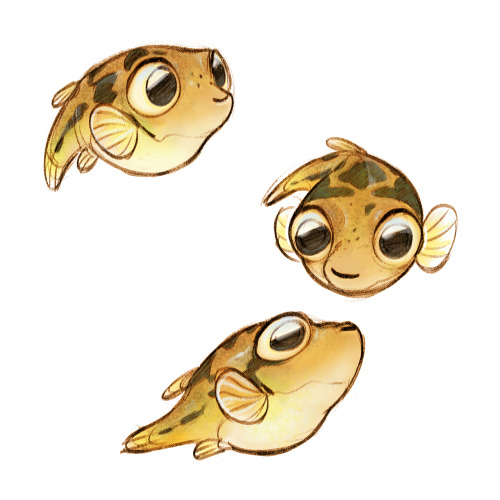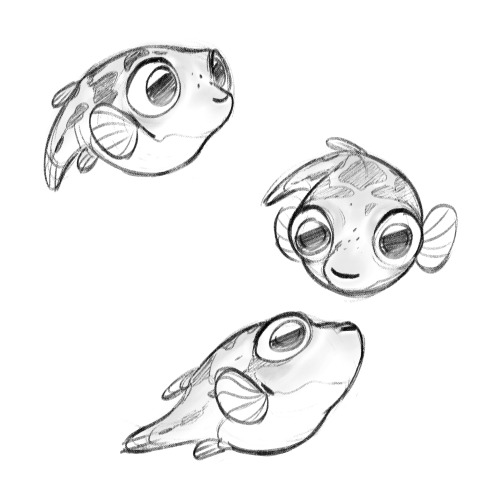
incredibleoctopi
51 posts
Latest Posts by incredibleoctopi
THANK YOU
I’ve said it before and I’ll say it again! Its ok to have tv shows that tell white stories! Like please there is no need for the white lotus to be diverse! The point of it is that its seriously some white people shit and THAT IS OK! As long as we have other shows that also tell black stories and asian stories as well as shows that are diverse in their universe WE ARE GOOD! Not every show needs diversity but the TV landscape itself MUST be diverse!
i really can’t stress enough how much i recommend regularly engaging with older art– movies, books, whatever. like, “Those who do not learn history are doomed to repeat it” and all that, but also, there’s just something really fascinating and kind of beautiful about reading something written by someone who lived so long ago and really connecting with it, recognizing the humanity of people who once seemed like abstract concepts to you
Reblog if you appreciate The Lunar Chronicles' lack of love triangles
Level 1: Prophecy proclaims that no man can kill villain; killed by woman.
Level 2: Prophecy proclaims that no weapon can harm villain; pushed down stairs and dies.
Level 3: Prophecy proclaims that villain will be brought low by no mortal hand; kicked to death by angry mob.
Level 4: Prophecy proclaims that no power on Earth shall be villain’s undoing; fatally distracted by sun in eyes.
Level 5: Prophecy proclaims that only power of laughter can defeat villain; beat up by clown.





[images: photos of the genjimonogatari art/card deck showcasing 1) the cover of the mint tin container; 2) the mint tin open with back of card lying on the lid and Flower of Purple card on the top of the pile; 3) rows of the cards laid out neatly; 4) the cards with Moon Above the Gate card on top; 5) a hand holding the cards from the side to show their edges and the trim of the art]
It’s here!! Yaaaay!!
Years of reading, rereading, drawing and obsessing later, I’m super excited to be able to say that the genjimonogatari card deck is a reality!
It’s a portable mini-art deck featuring all 55 illustrations I created in the Genjimonogatari series from 2018 to 2022 in ink and watercolour and comes in a cute little mint tin. You can enjoy it as a straightforward visual art deck, or use it as a tool to help deepen your understanding of the many fascinating themes and relationships in the Tale of Genji - and as a playable deck for fun minigames!
If you check out the product page, there’s a companion PDF booklet - for free, you don’t need to buy the physical deck to be able to download and read it!
It includes:
A high-level introduction to the Tale of Genji and why it’s so amazing
Ideas and examples for using the deck as a tool and to create/play an assortment of simple Tale of Genji-themed games
An overview of all 55 cards by illustration accompanied by my amateur attempt at compressing the richness of every single character down to one very short paragraph each to help you get to know them
A big thank you to @ancient-trees (who creates a wonderful fantasy adventure webcomic called Tamuran) for helping me to review the booklet. (Any mistakes are my own. If you find any horrible glaring typos/issues in the booklet, let me know and I will do my best to update/correct where possible. I have spent way too long flipping back and forth on footnotes and commentary and references… so grateful for Royall Tyler’s detailed footnotes and appendices!)
i knew the state of society’s view of children was bad but i didn’t realize just how dire the situation was was until the lockdown began. this last month or so has really opened my eyes to how much people dislike children, even their own children, simply because they exist and they need them because you know… they’re small humans without the capacity to care for themselves. it seems harmless but memes talking about how parents need alcohol to deal with their kids or can’t wait for their kids to go back to school so someone else can deal with them does harm in that it dehumanizes children and puts blame on the children for existing when it’s not the child’s fault they were brought into the world. it also brings about another uncomfortable fact: if you don’t like the way your children behave, barring them having a behavioral disorder or disability, you’re probably to blame and need to reevaluate how you’re raising them. children are more than innocent bystanders… they are helpless and absolutely reliant on the adults around them to not only provide for them, but to show them love which in turn sets the precedent for how they will love in the future. this attitude implying they asked to be here and that it’s okay to joke about how annoying they are has got to stop.
武功山wugongshan, pingxiang, jiangxi province
“You get a strange feeling when you’re about to leave a place. Like you’ll not only miss the people you love but you’ll miss the person you are now at this time and this place, because you’ll never be this way ever again.”
— Azar Nafisi









A - Z Challenge: @ibuzoo vs @lxcuna
[ D ] uyong: mermaids from Malaysian mythology, their basic shape - the upper body of a human woman paired with a fish tail - comes from the legend of Atargatis, the Assyrian goddess of the moon and fertility. Unlike western mermaids, they tend to be of a mournful nature, a behavioral trait also derived from Atargatis.

There are not enough How to train your dragon books fanarts around tumblr so we(me and my sis) decided to fill this gap! Here is my Hiccup, Fislegs and Camicazi (and here is my sister’s version )
Can you describe Cressida Cowell's writing style? (And try to convince me to start reading httyd books while you're at it)
Oh my goodness, I am *SO* excited to talk about Cowell’s writing style!
I realized my FAQ page was outdated with a broken link (whoops!), so I’ve fixed that! If you haven’t check that page out or my up-to-date #faq tag, I’ve written many responses on why I recommend the HTTYD books. Obviously those posts aren’t focused on Cowell’s writing style, as you’re curious about. Nevertheless, since you’re interested in recommendations and perspectives regarding those books, these prior responses could be worth checking out, and I’ll happily boop you a link to some of those! [1] [2] [3]
Cressida Cowell’s writing style, to me, is a fascinating combination of simple and eloquent. This goes for how she forms sentences, constructs plot, uses tropes, and more. She takes seemingly common elements that most of us wouldn’t consider “special” - and utilizes them to powerful effect.
Her narration style is charming. In the How to Train Your Dragon books, she uses two similar but distinct writing styles. The prologues and epilogues are given a finesse different than the material in the main chapters.
The majority of her text is written in an almost whimsical, childish way - especially at the start of the series. Sentences are simple; descriptions are amusing; humor is prevalent; and her presentation is straightforward. Unashamed use of italics, capslock, font changes, and font size changes - plus childish scribbles for illustration - contribute to the youthfulness of her narration.

How to Train Your Dragon Ch. 1: First Catch Your Dragon:
“ANYBODY would be better than Hiccup,” sneered Snotface Snotlout. “Even Fishlegs would be better than Hiccup.”
Fishlegs had a squint that made him blind as a jellyfish, and an allergy to reptiles.
“SILENCE!” roared Gobber the Belch. “The next boy to speak has limpets for lunch for the next THREE WEEKS!”
There was absolute silence immediately. Limpets are a bit like worms and a bit like snot and a lot less tasty than either.
As the series develops, the main prose develops slightly, too. Fans often discuss how Cowell’s illustrations markedly grow in complexity from start to end, even as they retain their childish personality. Cowell herself has confirmed that these artistic changes are representative of Hiccup aging. The writing doesn’t change as notably, but it’s arguably there. So, this benign, whimsical narration takes on intentional effect: she’s writing a story about a child with prose that matches the character’s age. It helps us readers enter the mind of a child as we go through Hiccup’s younger years. It’s not to say that it means we can’t think through complex topics in this framework, because we do address deep topics in the breadth of the narration… but the childish writing style provides a personality and character and framing device for how we readers “feel” the story.
The prologues and epilogues are different. In first instead of third person, they’re written as the reflections of old man Hiccup in his eighties. The writing style here maintains simple characteristics in, for instance, word choice… but it’s mature in tone and topic. These passages are often my favorites, as they delve into interesting moral reflections tied to the adventures young!Hiccup is having in the main story. This is where Cowell shines the most in her combination of simple and eloquent. There’s beauty in what she writes in the prologues and epilogues. Reading them aloud, words flow marvelously (that opening passage in the first book… mmm yum), and you can hear the reflection of the man behind them. It’s where you’ll get quotes like:
How to Ride a Dragon’s Storm: Epilogue
Maybe all Kings should bear the Slavemark, to remind them that they should be slaves to their people, rather than the other way around. And to help them never to forget what it feels like to be a child… to be small and weak and helpless.
How to Betray a Dragon’s Hero: Prologue
Great things are only made out of love and out of pain.
A great sword must be made out of the very best steel. But what truly makes the sword great is what happens to the sword after it is made.
We call this the “testing” of the sword.
The sword is bashed and hammered and hollered into shape by the bright hammer. It is thrust into the fierce heat of the fire, where it softens, and then it is quickly quenched in water, where it hardens again. The higher the temperature, the fiercer the fire, the tougher and greater the sword eventually becomes.
The whole testing process can make a sword, or break it.
The same could be said for the making of a Hero.
Cowell’s still not using complicated vocabulary. Occasionally she’ll insert something like “indelible” into the text, but generally, it’s (superficially) simple language. However. It’s also thoughtful, eloquent, and markedly more mature than something you’ll get in Chapter 3 of the first book. “Great things are only made out of love and out of pain” is something I could embroider and hang on my wall - it’s that sort of a reflective quote.
The contrast of the two styles - the more childish and the more eloquent-mature - help us understand Hiccup’s life from two perspectives: the viewpoint of a kid experiencing dangers around him idealistically hoping to change the world, and the viewpoint of an adult reflecting back with complex moral understandings. And as Hiccup’s adventures become increasingly darker and he grows in age, the main prose will match the mood.
The writing style works. She doesn’t need a large vocabulary or complex sentential forms to sound thoughtful and imbue great adventures or thematic points. Cowell knows how to impart heart-felt concepts and great reflections for readers of any age, child to adult… and have us impacted by them.
Cressida Cowell’s use of tropes is similarly deceiving. The best writing, I believe, combines refreshingly new material with storytelling elements we’re familiar with - our tropes. I believe Cowell strikes the balance marvelously.
She brings in wildly creative new concepts - like a quirky world where dragon species are everything down to big-mouthed bee catchers or insect-sized nanodragons. Characters are equally as ridiculous and special; I’d be hard-pressed to find a personality similar to Camicazi anywhere in literature or media.
Cowell also knows how to use tropes. We so often see the feckless, unwanted, socially outcast wimpy protagonist turn into a Hero. We’ve seen a character with a special sword and a noteworthy family history. We’ve seen a character called by fate and prophecy to revolutionize the land before apocalypse. But that doesn’t make Hiccup a generic character handled blandly. Cowell balances fate with agency and with the challenges of reality. Hiccup has to make choices to save what he loves. And Hiccup is limited in what he can do. After all, “History is a set of repeating circles, like the tide. The wind does blow through the ruins of tomorrow. But it is more a question of two steps forward, one step back.” What we get is a Hero’s journey, but one where our Hero is truly spectacular, diligent, unyielding, pushed to the brink, and endlessly inspirational.
I think the thing that impresses me the most in how Cowell handles tropes is the “it can’t get any worse and then it does” concept. We’ve seen it before. Stories make protagonists go through a dark low. And when the character doesn’t think situations can worsen, they do. What makes the HTTYD series so spectacular and unique in how it’s handled… is the sheer repeated beating Cowell does. It’s overwhelming. She keeps going, and going, and going, and going, and doesn’t stop. Other authors would have stopped five bad events ago! It’s to the point that, in book ten, after so many bad things repeatedly occurred, I cried when Hiccup reached one small positive in his efforts. The author isn’t afraid to put our protagonist through the ringer, thereby making every bad experience, and good experience, impacting, memorable, and sometimes shocking to us as readers.
Cowell definitely uses plot devices we’ve seen before. But she weaves them together impactingly, making an emotional ride through high highs and low lows. We’re left with an inspirational takeaway and a Hero’s development we won’t forget.
Cowell’s long-term plot structure is brilliant, too. She divides the series into three equal parts, more or less. The first part is the “isolated” series of whimsical, innocent, childish adventures. The second part makes you squint suspiciously, realizing you’re getting into more complex and dangerous incidences than you expected. The third part is what I lovingly call “the Ragnarok of pain and despair.”
The starting books, deceivingly, seem like isolated, simple adventures. Cowell’s actually setting ALL the stages for the series’ later turmoil. She’s inserting characters, items, prophecies, themes, conflicts, and plot points that will become extraordinarily impacting as the series continues. But readers don’t notice Cowell’s clever, thorough foundation. They just see cutesie, simple, isolated incidences first read through.
The middling section is where Cowell starts to utilize what she set up. She begins implementing chaos and intertwining strings, pulling Hiccup’s life from random childhood incidences with Alvin and dragons… into something centrally important. She brings together the history of the Barbaric Archipelago with the current events Hiccup’s experiencing around him. All Hiccup’s starting point experiences from the first books become formulative to the choices he has to make now. And all the while, there’s the stewing build-up of a central conflict… which explodes at the end of the second part.
The third part is all-out war. All-out drama. All-out danger. All-out stakes. We see how everything Cowell wrote is interconnected, from the start of the series to whatever conclusion Hiccup’s journey will bring. Moral themes and questions are central; characters are pushed into growth; what we thought was some random thing at the start turns out to be a cleverly-inserted Chekhov’s gun. It’s the payoff to all the set-up and build-up… brilliantly, effectively executed.
Obviously I can’t give examples to you. That would be spoilers. XD To people who’ve read the series, I’ll just say, for one example: all the King’s Things. That’s one example of Cowell’s build-up. But the build-up is everything from moral themes, to character dynamics, to foreshadowed historical revelations. It’s well-paced, well-thought through, well-executed.
The How to Train Your Dragon books are thus both simple and eloquent. And that which is simple isn’t “watered down” - it’s “simple” with purpose, “simple” with complexity, “simple” with personality, “simple” with power.
This is why I always encourage people to keep reading after the first few books. Some people find the starting adventures adorable, loving the charm and humor. I adore that all myself! They’re legitimately treasurable books in and of their own. Other readers aren’t as interested in the cutesie stuff, approaching the first HTTYD books with skepticism; they don’t think that these benign stories are “their thing.” However, every time I’ve encouraged skeptics to read after the first few books, they get sucked in, and find themselves screaming and crying and laughing and celebrating with Hiccup’s dynamic adventures. It’s all because Cowell’s simplicity is deceptive: there’s so much more going on, and there’s always more going on the deeper in you look.
good morning cruel world
feathered flames.
@writersnet event 1 · april 2021 | mythology
One boy plummets, bleeding wax, raining feathers. Bleeding feathers, raining wax. Another boy crashes, bursting with stolen divinity, caught in reins he no longer controls.
They burn, each on his own, across skies, across worlds, across space and time. You know how these stories end. Hubris inscribes their fates—punishments, for curiosity, for aspirations—onto their skin in flaming ink, preserved by whispers and ink.
Perhaps the boys are less daring in some worlds, and heed their fathers’ advice. They are not lost to oceans—they drown in history’s forgotten abysses instead. Perhaps they laugh in some skies and scream in others. Maybe some gods are cruel, and have them languish for eternity and beyond.
But maybe some are kinder, and Icarus and Phaethon find their way to each other as they fall.
Have you kissed the Sun, too? I have been the Sun. That is why we fall from grace. We fall to glory, brother, and nothing less. Do not regret it. A charred smile. The world was not meant for such as us.
(Perhaps some other world will be.)
—aish. 03/05/2021.
tag list: ask to be added/removed!
@aeternve @jepser @durgaa @ortolon @scarlett-dragna @patruchilles @ariadnaes @vaelinor @prelapsariian @laythe @isohelle
i mean this in the nicest way possible you guys but you NEED to take better care of yourselves online. getting severely anxious about mass quantities of horrible things you cant change every single day is normal considering the internet’s ability to educate on worldwide issues, it shows that you have empathy and that you truly do care. but relentless knowledge of constant suffering on this scale is NOT something humans are psychologically equipped to handle. it’s okay to shut off. it’s okay to just take a break and enjoy yourself for a while in your own localized space
whitepill of the day. chances of divorce drops down to less than 10% if
- dated for 6 months or more, but less than 5 years
- parents are married
- have a religious affiliation and in agreement about it
the thing about “well-behaved women rarely make history" is that the author, Laurel Thatcher Ulrich, didn’t write it about women who would be considered “badly-behaved;“ she wrote it in a book about a midwife, about women who had been largely ignored and erased from history because as a result of their “good behaviour.” So it’s not a “BAD GIRLS DO IT WELL" kind of quote; it’s a reminder to respect and pay attention to the women who go about quietly living their lives.

Kikyo Gate (Kikyomon), from the series “Twenty Views of Tokyo (Tokyo nijukkei)”, Kawase Hasui, 1929, Art Institute of Chicago: Asian Art
Gift of Oliver Statler Size: 38.9 x 26 cm (15 5/16 x 10 ¼ in.) Medium: Color woodblock print; oban
https://www.artic.edu/artworks/87304/
when w. h. auden said “evil is unspectacular and always human” and ursula k. leguin said “this is the great treason of the artist: a refusal to admit the banality of evil and the terrible boredom of pain”
Men are not bad. Even if they're cis, het, white, abled, christian, and whatever other privileged identity that can be applied. Men can be bad, but badness is not a male trait. It is not inherent nor exclusive to men. There are amazing men. There are horrible women. No characteristics are inherent to any gender. It is okay, wonderful even, to be a man. Just like it is with any other gender.
Toxic pro-choice culture is:
A client of mine’s daughter had pregnancy complications and ended up miscarrying in the hospital. When she was discharged, heartbroken, she and her husband were leaving to begin to make plans for a little funeral when one of the hospital staff stopped them and said “here it is,” handing them a brown paper lunchbag with the body in it, and walked off without any kind or consoling words. Striken by the indignity of it, left without instructions, and still recovering, they didn’t know what else to do except take it home and put it in their refridgerator so that it wouldn’t decay as fast while they tried to make funeral arraingements.
Can you imagine the horror? You just unexpectedly lost your child, and it’s body is handed to you in a rude sack, leaving you with no other options except to keep it in your fridge?
And my client, as she was telling me this traumatic story, tearing up herself because she shared her daughter’s grief and loved the grandbaby that didn’t make it, thought she needed to emphasize to me how much of a loss it was because “it was a wanted baby.”
The pro-choice culture where I live is so vulgar and prominant that hospitals toss the remains of your unborn child to you as if it was nothing, and a greiving grandmother feels like she has to justify her sorrow by clarifying that it was a “wanted” child, to not go against the culture of “it’s perfectly fine to abort your pregnancy if you don’t want a baby!” But there is no difference between an unborn child who is wanted and one who is not. They are the same from every biological and moral standpoint.
It’s simply alien how much more acceptable it is to talk about supporting abortion rights than grieving the death of a “wanted” unborn child. In their hearts they know the dichotomy, but it isn’t okay to try to address it and solve it, since pro-choice is the only acceptable stance to most people.
I hit a lot of water drops!💧💦💨 (4x speed)
たくさんの水滴に当たったよ!💦💨 (4倍速)

what if bird,,, was big

snail cat


The Andrews Sisters (from Left to Right : Laverne, Patty and Maxene) mid 1940’s
hot tea: modesty is not just for girls but something that boys should concern themselves with and practice as well







moooeow
UPDATES ON THE JOSH FIGHT!
According to Fawcette, the main streamer of the event, the amount of Joshes who turned up is about 75-100 Joshes. Any streams are really laggy, but for those who couldn’t tune in here are some pics:








These were taken from a laggy stream, but as you can see the turnout is massive. The crowd is estimated to be at least 200 people.
The latest winner from the series of Josh fights is “Tiny Josh”, a four year old child who was inducted into the battle. As of right now, the bearer for the title of “The One True Josh” is the original Josh Swain.
Updates will continue if the stream stops lagging.

